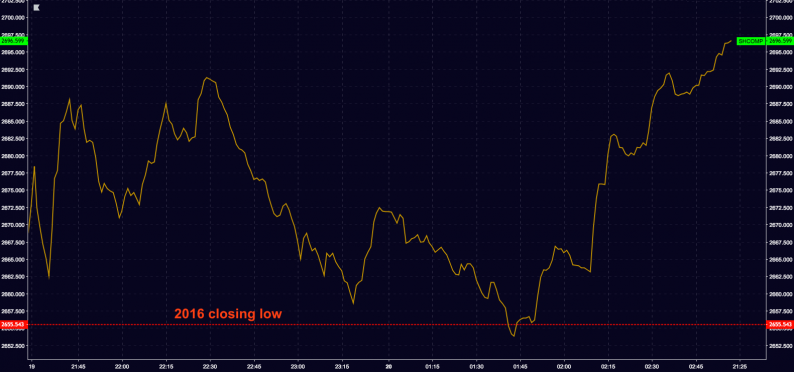It looks like China has had enough of the stock market declines for the time being.
Policymakers have taken a series of steps this month to shore up the yuan in an apparent effort to defend ~6.90 and then guard against the psychologically important 7-handle as the turmoil in Turkey threatened to put renewed pressure on China along with EM more generally. Beijing’s three-pronged effort involved the reinstatement of forwards rules (August 3), the chiding of onshore banks for selling RMB (August 7) and a move to squeeze offshore liquidity (August 16). The yuan has also been buoyed by lower-than-expected USDCNY fixings. On Monday, the PBoC strengthened the reference rate by 0.26% to 6.8718, that was stronger than consensus (6.8742) and tipped an ongoing desire to support the currency during a week that features low-level trade talks between the U.S. and a Chinese delegation set to arrive in Washington on Wednesday.
So I suppose it was about time for Chinese equities to stabilize too. “Chinese stocks’ seemingly bottomless fall conflicts with signs of stability in the yuan and bond markets”, Bloomberg’s Kyoungwha Kim wrote on Monday, flagging rising yields on Chinese government bonds and the onshore yuan’s move back below 6.90.
“China’s retail-dominated stock markets seem to be too depressed to pay attention to the policy-fueled signs generated in FX and bonds”, a bullish Kyoungwha Kim continued.
Well, that short blog post came within minutes of Chinese stocks hitting two-year lows. And guess what? The vaunted “national team” stepped in, that’s what. The Shanghai Composite’s closing low in 2016 was 2,655, and on Monday, when stocks hit that apparent line in the sand, state-backed funds stepped in to engineer a rally.

China Securities Journal also reported that the CSRC has been chatting with analysts from a couple of brokerages in order to solicit their “views” on markets. That’s amusing and certainly seems to suggest that authorities are about to embark on a concerted effort to stabilize things.











Leave A Comment